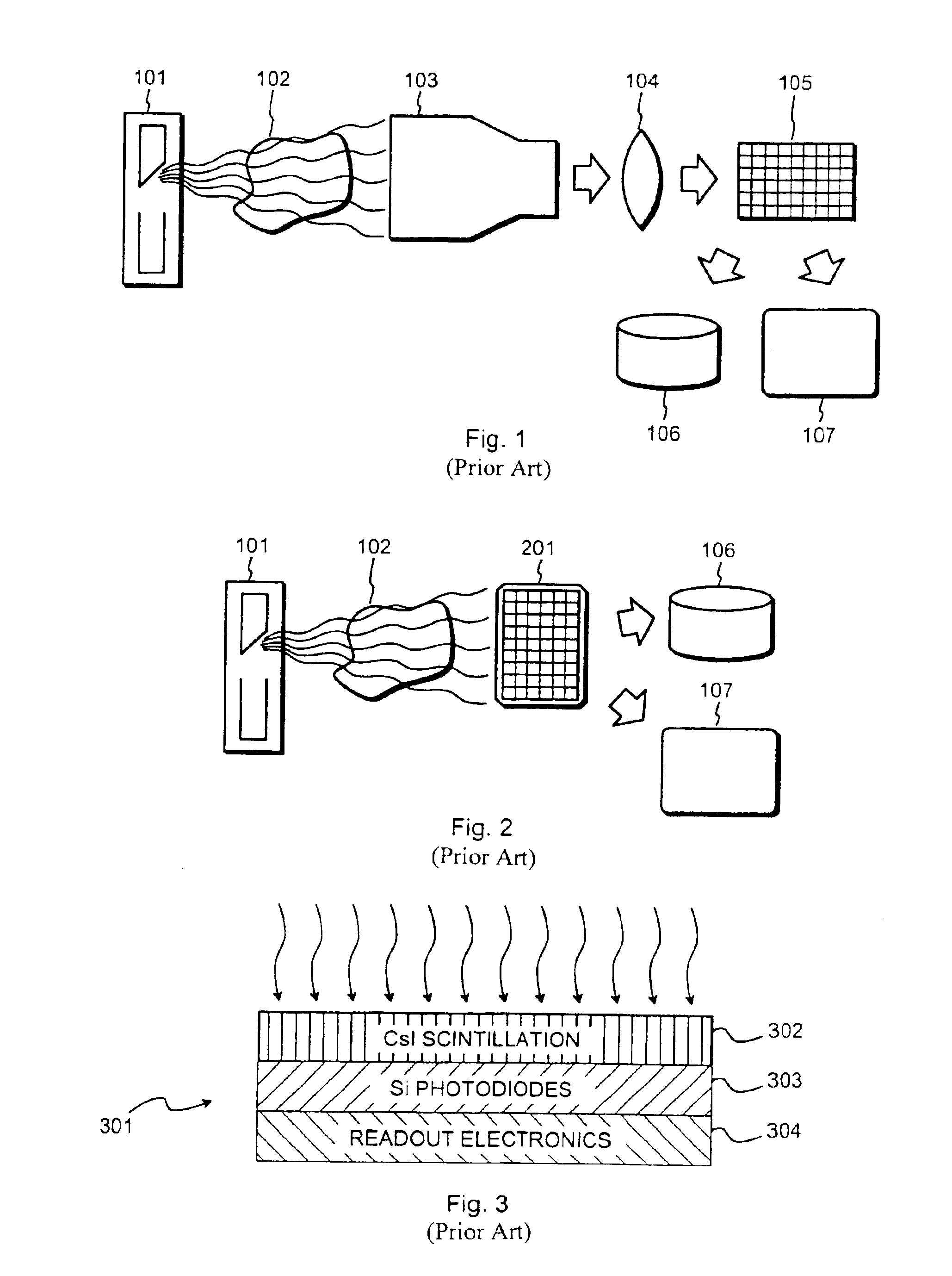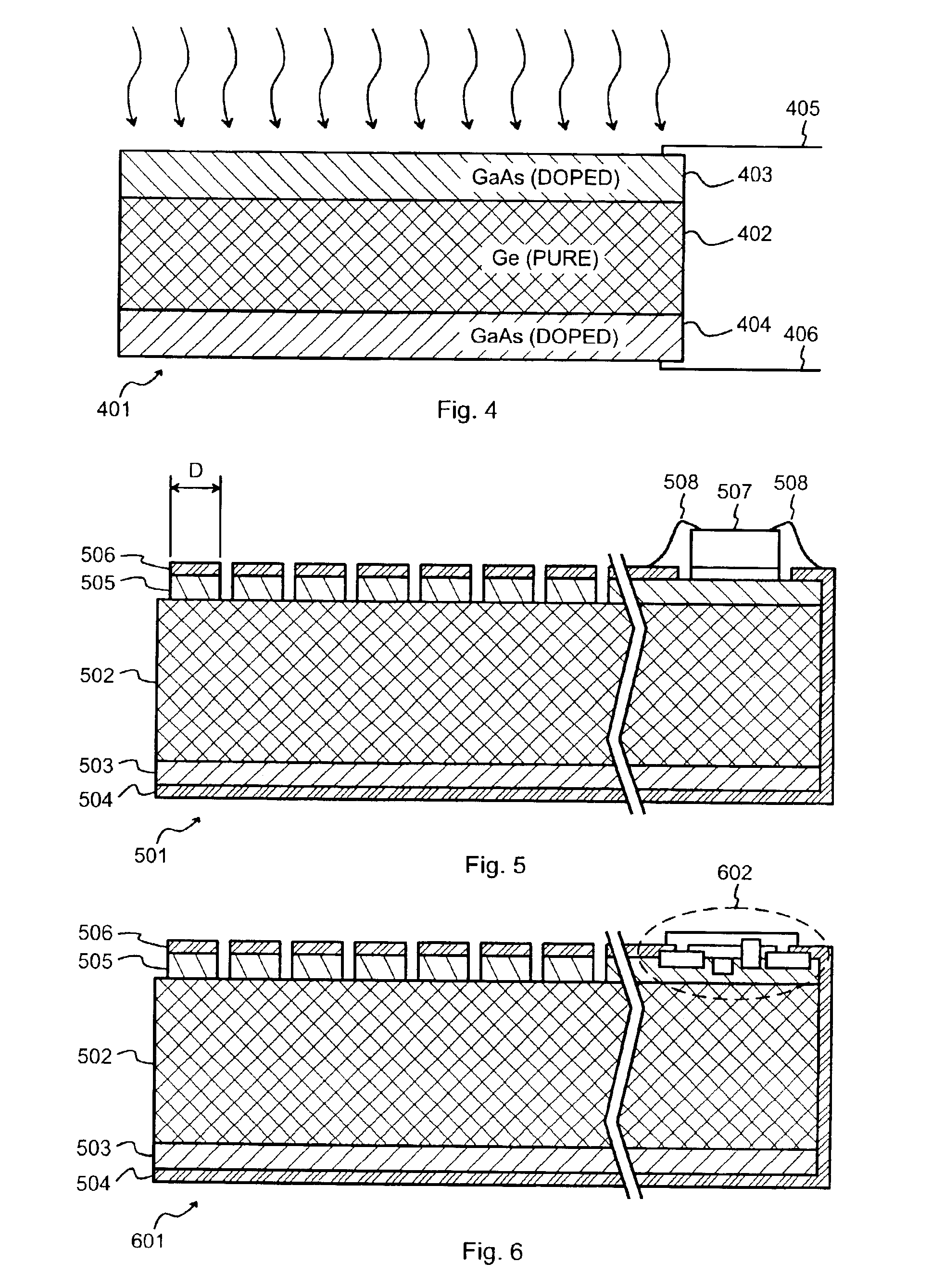Imaging X-ray detector based on direct conversion
a detector and x-ray technology, applied in the field of direct conversion of x-ray detectors, can solve the problems of reducing the efficiency of collecting information from objects under study, introducing noise, and introducing such a structure with good yield and high homogenous gain throughout the detecting surface, and achieves the effect of high yield and high homogenous gain
- Summary
- Abstract
- Description
- Claims
- Application Information
AI Technical Summary
Benefits of technology
Problems solved by technology
Method used
Image
Examples
Embodiment Construction
[0030]The exemplary embodiments of the invention presented in this patent application are not to be interpreted to pose limitations to the applicability of the appended claims. The verb “to comprise” is used in this patent application as an open limitation that does not exclude the existence of also unrecited features. The features recited in depending claims are mutually freely combinable unless otherwise explicitly stated.
[0031]FIG. 4 is a schematic cross section through a stack of semiconductor layers that together constitute the radiation-sensitive parts of an X-ray detector 401. Basically the detector's semiconductor stack consists of a pure Ge layer 402 sandwiched between two oppositely doped GaAs layers 403 and 404. “Oppositely doped” means that one of the GaAs layers 403 and 404 is an n-type semiconductor layer and comprises a surplus of negative charge carriers (electrons), while the other is a p-type semiconductor layer and comprises a surplus of positive charge carriers (...
PUM
| Property | Measurement | Unit |
|---|---|---|
| thickness | aaaaa | aaaaa |
| thickness | aaaaa | aaaaa |
| thickness | aaaaa | aaaaa |
Abstract
Description
Claims
Application Information
 Login to View More
Login to View More - R&D
- Intellectual Property
- Life Sciences
- Materials
- Tech Scout
- Unparalleled Data Quality
- Higher Quality Content
- 60% Fewer Hallucinations
Browse by: Latest US Patents, China's latest patents, Technical Efficacy Thesaurus, Application Domain, Technology Topic, Popular Technical Reports.
© 2025 PatSnap. All rights reserved.Legal|Privacy policy|Modern Slavery Act Transparency Statement|Sitemap|About US| Contact US: help@patsnap.com



